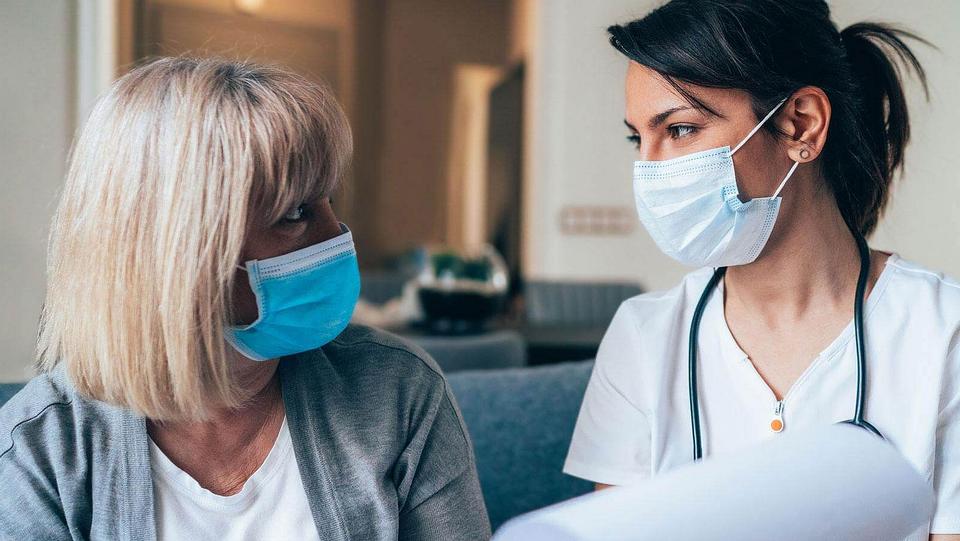Johns Hopkins Medicine researchers have found that increasing the use of evidence-based medications — therapeutic drugs proven by scientific evidence — may significantly improve care for those with opioid dependence. Credit: Public domain image
Unintentional overdoses are the leading cause of death for Americans under 50, with many people knowing at least one person who has struggled with drug dependence. In a recent study, Johns Hopkins Medicine researchers found that effective treatments for opioid addiction are underutilized and offer a potential solution to the problem — increasing access to medical help through a quality improvement project.
The study, published May 18, 2021, in the Journal of Hospital Medicine, details how a team led by Ashish Thakrar, an addiction medicine fellow at the Johns Hopkins University School of Medicine, propose a simple, yet effective awareness and educational program. The protocol increases the use of evidence-based medication — that is, therapeutic drugs shown by scientific evidence to be useful at treating opioid dependence. There are currently only three evidence-based medications to treat opioid dependence, and Thakrar says they are all underutilized. Thakrar’s team focused on increasing the use of one of these drugs — buprenorphine — in patients admitted to The Johns Hopkins Hospital, many with substance use-related issues.
Buprenorphine is a drug approved by the U.S. Food and Drug Administration to treat opioid dependence. Experts say that buprenorphine — which also is an opioid — can be prescribed alone or as part of a comprehensive treatment plan that includes counseling and other behavioral therapies to provide patients with a whole-person approach.
“Changing practice is hard,” Thakrar says. “There are dozens of well-conducted prospective and retrospective studies showing that buprenorphine works. It reduces mortality by 50%, reduces the rate at which patients use opioids, improves the patient’s quality of life and helps retain patients in other kinds of medical and dependence care.”
Before the project was implemented for the study, Thakrar says only 10% of eligible patients received approved medications for treating opioid dependence. After the project, discharge prescriptions more than doubled to 24%. Thakrar says the increase was due to the use of a one-page, easy-to-use protocol posted in common areas of the hospital; the presentation of the protocol at a conference with a successful patient case study; and the establishment of a novel, resident-led buprenorphine bridge team.
The bridge team consists of a group of residents and attendees who are legally permitted to prescribe buprenorphine prescriptions. This facilitates the use of the drug for treating opioid dependence — because while any provider can administer it within a hospital, prescriptions require a special waiver from the federal Drug Enforcement Administration.
As part of the quality improvement project tested during the study, 140 internal medicine residents and 16 combined medicine-pediatrics residents received one hour of formal education about opioid use disorder. Additionally, 28 residents who were specializing in urban health primary care spent one month in a clinical rotation focused on dependence medicine. During that rotation, they completed the eight-hour training required to receive the DEA waiver. The training included guidance on selecting patients, shared decision-making around treatment, avoiding precipitated withdrawal, dosing buprenorphine and establishing follow-up.
After learning and implementing the protocol, the majority of residents reported feeling more comfortable and more knowledgeable using the buprenorphine treatment.
“Providers want to give good care to patients with opioid dependence, and are eager for tools that can help them do so,” says Thakrar. “Many of the limitations for providing the best care are structural and logistical, so we need multidisciplinary approaches that include nurses and social workers. Collaboration is key.”
Thakrar says the buprenorphine bridge team continues to be active at The Johns Hopkins Hospital. Since the team was established in 2019, the hospital also has started a full dependence medicine consult service.
“I hope that other hospitals can see that there are protocols that can improve the quality of care,” Thakrar says. “Small changes can make a big difference for patients with opioid dependence.”

